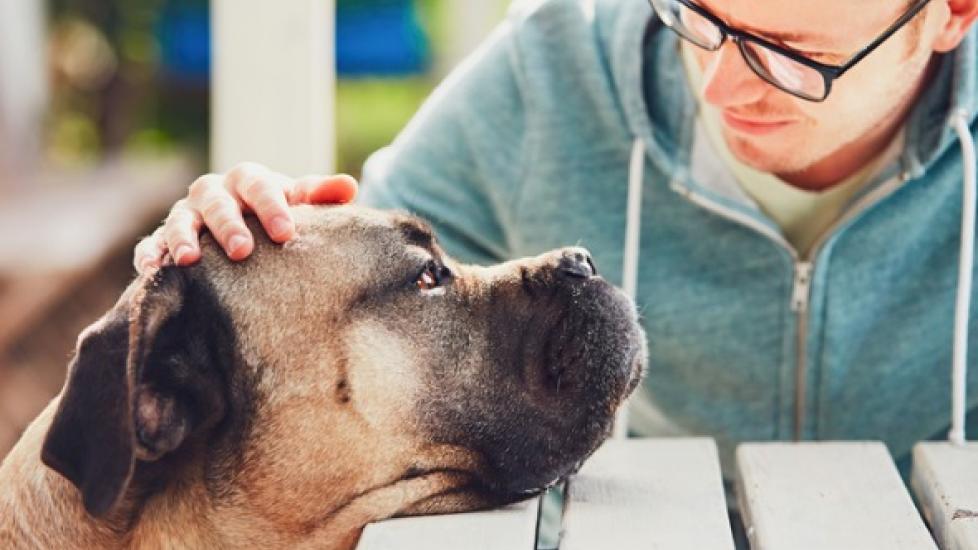Do Dogs Have a Sixth Sense That Helps Them Read Your Mood?
Whenever I am sad, my dog Alma never fails to sit by my side, put her head into my lap and bring comfort. Conversely, when she has done something naughty, Alma has this uncanny ability to slink away as soon as I look at her.
Do you ever feel like there’s a dog sixth sense that allows your pup to read your moods and react accordingly? I can imagine you reading this right now, vigorously nodding your head yes!
If you have ever wondered about this phenomenon, or if you like you are losing it for thinking that your fur friend has supernatural dog senses, you are not alone. Pet parents across the globe have the same question: Can dogs pick up on our subconscious cues, and essentially, read our moods?
The Love Hormone Helps Process Those Emotions
It turns out that animal behaviorists have the same question, and this very concept has been studied in both dogs and cats. Dogs, who have been evolving alongside humans for thousands of years, have clearly demonstrated an ability to recognize and respond to human emotions, and scientists now know that they use ordinary and extraordinary dog senses to do this. A 2009 study found that dogs gaze much longer at happy versus sad human faces, indicating that they may be sensitive to human emotions.
Dogs preferentially look to our eyes to read our emotions, and the hormone oxytocin is also involved in this connection. Secreted by the mammalian brain, oxytocin is nicknamed “the love hormone,” and it affects social behaviors and cognition, among other things.
In a 2017 study, researchers used eye-tracking technology to follow gaze patterns of untrained dogs in response to human faces. The faces displayed positive or negative emotions in order to investigate the effect of oxytocin on eye patterns in the dogs. What they noticed was that in order to process the emotions of humans, all of the dogs looked at the eye region of the human faces.
Researchers found that oxytocin decreases the amount of time that dogs looked at the angry human faces and also decreased the dogs’ preference for gazing at the eye region altogether, even with happy human emotions. While more research needs to be done, oxytocin is definitely involved in our fur friends’ ability to read our emotions.
Dogs Avoid Angry Humans
Another study, published in 2016, found that dogs process human emotions from gazing not just at the eye region, but also the midface and mouth regions. Dogs are a highly social species, and they are evolved to evaluate social threats rapidly, including threats the come from humans.
This study found that when dogs viewed images of other threatening dogs, they reacted with increased attention to the image. However, when they viewed images of threatening humans, they responded by avoiding the image.
This makes a lot of sense when you think about it—if you come home and you chew your pup out for chewing on the couch, they are going to slink away to avoid you. Your pet isn’t feeling guilty, but is afraid of you.
This has massive implications on the way we interact with and train our canine companions. The fact is, expressing anger by yelling, shouting or frowning at your dog creates conflict within your relationship and can severely damage the human-animal bond.
Some dogs are more sensitive than others; at the slightest hint of displeasure, my dog Alma slinks away from her human family and hides.
A dog that is afraid is more likely to have behavioral problems, a reduced attention span, increased stress, fear-based aggression, anxiety and a shortened life span. They are also more likely to be relinquished to a shelter and have an overall reduced quality of life.
So How Do I Use This Information?
Knowing how your dog interacts with your emotions and facial cues is empowering. You can modify your interactions with your dog to create a healthy relationship that is based on mutual trust and love—both of which dogs give in spades when they feel safe.
First, be extraordinarily mindful of your emotions around your dog and emotions that you direct toward your dog. This is especially important in high-stress situations like veterinary visits, where the dog is already likely to be triggered.
You can use this information to your benefit when training your dog. Your dog is always looking for positive reinforcement from you to guide behavior development. When your dog does something right, make sure to communicate this with your whole face and your voice; that way, your dog will be more attune to your signals and more likely to repeat the desired dog behavior.
If your dog is engaging in undesirable behaviors that you want to stop, in order to avoid conflict in your relationship, you will need to communicate in a way that is not threatening. Simply by lowering the tone of your voice when you say, “No” can be enough to get a dog to stop what they are doing and look to your face for cues.
As soon as they stop what they are doing and look to you, smile, praise your dog and give a dog treat, or provide some fun playtime! That communicates clearly to your dog what is and what is not desired by you.
The more you work with your dog in a non-threatening manner, the closer your bond will become and the easier it will be to communicate. Remember—your dog can read your facial cues, so keep it positive, and enjoy all the benefits that a healthy relationship with a dog can bring.
Image via iStock.com/Chalabala
